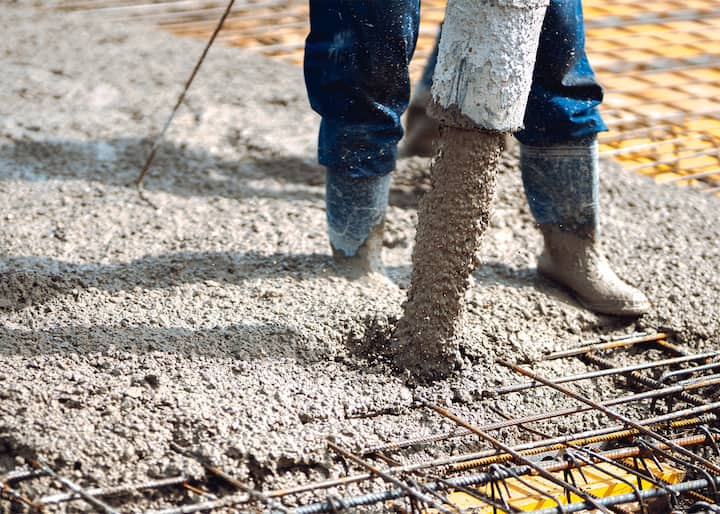
Why we see concrete reinforced with steel
Concrete is often referred to as the ‘foundation of modern society,’ serving as the backbone for countless structures around the world. From skyscrapers to bridges, concrete is the material of choice for many construction projects due to its durability and versatility.
However, despite its many benefits, concrete does have its limitations, and this is where steel reinforcement comes in to play. As the saying goes, ‘you are only as strong as your weakest link,’ and this applies to concrete as well.
While concrete is strong in compression, it is weak in tension, meaning that it can easily crack and fail when put under stress. To combat this, steel reinforcement is added to concrete structures to provide tensile strength and improve their overall performance.
In this article, we will explore the role of steel reinforcement in concrete, the different types of reinforcement available, and how engineers design with reinforced concrete for maximum effectiveness.
The Limitations of Concrete
The inherent weaknesses of traditional building materials have been well-documented, resulting in the need for alternative solutions to address these limitations.
Concrete, for instance, is a popular building material due to its durability, strength, and affordability. However, it also has some limitations, such as low tensile strength, low ductility, and susceptibility to cracking under tension. These limitations make it unsuitable for use in certain applications, such as in bridges, high-rise buildings, and earthquake-prone areas, where high strength and durability are essential.
To overcome these limitations, concrete is often reinforced with steel, which provides additional tensile strength, ductility, and resistance to cracking.
The combination of concrete and steel, known as reinforced concrete, is widely used in the construction industry due to its superior strength, durability, and versatility.
The Role of Steel Reinforcement
The incorporation of a supportive material within a composite construction material enhances its structural stability, preventing potential structural failure and enabling it to withstand greater loads.
Concrete, although a durable and versatile material, has its limitations, especially when subjected to tensile forces. As a result, steel reinforcement is often introduced to concrete to provide the necessary tensile strength.
Steel is a ductile and malleable material that can be shaped and bent into various forms, allowing it to be placed within the mold of the concrete structure. The steel reinforcement bars provide tensile strength to the concrete, preventing it from cracking or breaking under stress.
Additionally, steel reinforcement increases the overall structural integrity of the concrete, enabling it to withstand greater loads and resist deformation.
In summary, the incorporation of steel reinforcement within concrete is crucial for enhancing its structural stability, preventing potential structural failure, and enabling it to withstand greater loads.
Types of Reinforcement
Various materials can be utilized as supportive elements within composite construction materials to enhance their structural stability, and the incorporation of these materials can be categorized based on their composition and form.
In the case of concrete, steel reinforcement is the most commonly used material due to its high tensile strength and resistance to corrosion. There are two main types of steel reinforcement used in concrete construction: rebar and welded wire fabric.
Rebar, or reinforcing bar, is a steel rod that is placed in the concrete to provide additional strength and support. Welded wire fabric, or wire mesh, is a grid of steel wires that are welded together to form a sheet. This sheet is then placed in the concrete to provide reinforcement.
The type of reinforcement used depends on the specific application and the required strength of the concrete structure. Overall, steel reinforcement is essential for ensuring the structural integrity of concrete and for preventing cracks and other forms of damage.
Designing with Reinforced Concrete
Designing with supportive materials in composite construction can greatly improve the structural stability and durability of a building, and understanding the various forms and compositions of reinforcement is crucial in optimizing its performance.
The process of designing with reinforced concrete involves considering the properties of the concrete and the steel reinforcement, as well as the load requirements and environmental factors.
The design must take into account the strength and placement of the reinforcing steel, and the spacing and diameter of the bars.
The goal is to create a structure that is both safe and durable, and that can withstand the forces of nature and the wear and tear of everyday use.
In order to achieve this, designers must carefully calculate the amount and placement of reinforcement, using computer models and other advanced tools to ensure that the structure is sound.
Ultimately, the combination of concrete and steel reinforcement provides a strong, long-lasting material that can be used in a variety of construction projects, from bridges and buildings to tunnels and dams.
Future of Reinforced Concrete
Innovations in composite materials and construction techniques are expected to further improve the structural integrity and sustainability of building designs.
The future of reinforced concrete is likely to see a shift towards more sustainable and eco-friendly materials, as well as the incorporation of advanced technologies such as 3D printing and robotics.
Additionally, researchers are exploring the use of nanotechnology to enhance the properties of concrete, making it stronger and more durable.
With these advancements, reinforced concrete will continue to be a reliable and cost-effective building material for years to come, while also reducing the environmental impact of construction.
As the demand for sustainable building materials increases, the future of reinforced concrete looks bright, with endless possibilities for improving its strength, durability, and sustainability.
Get local quotes for all your Concrete needs
Looking for professional concrete contractors in Myrtle Beach, South Carolina? Reach out to us today to compare quotes from local experts!